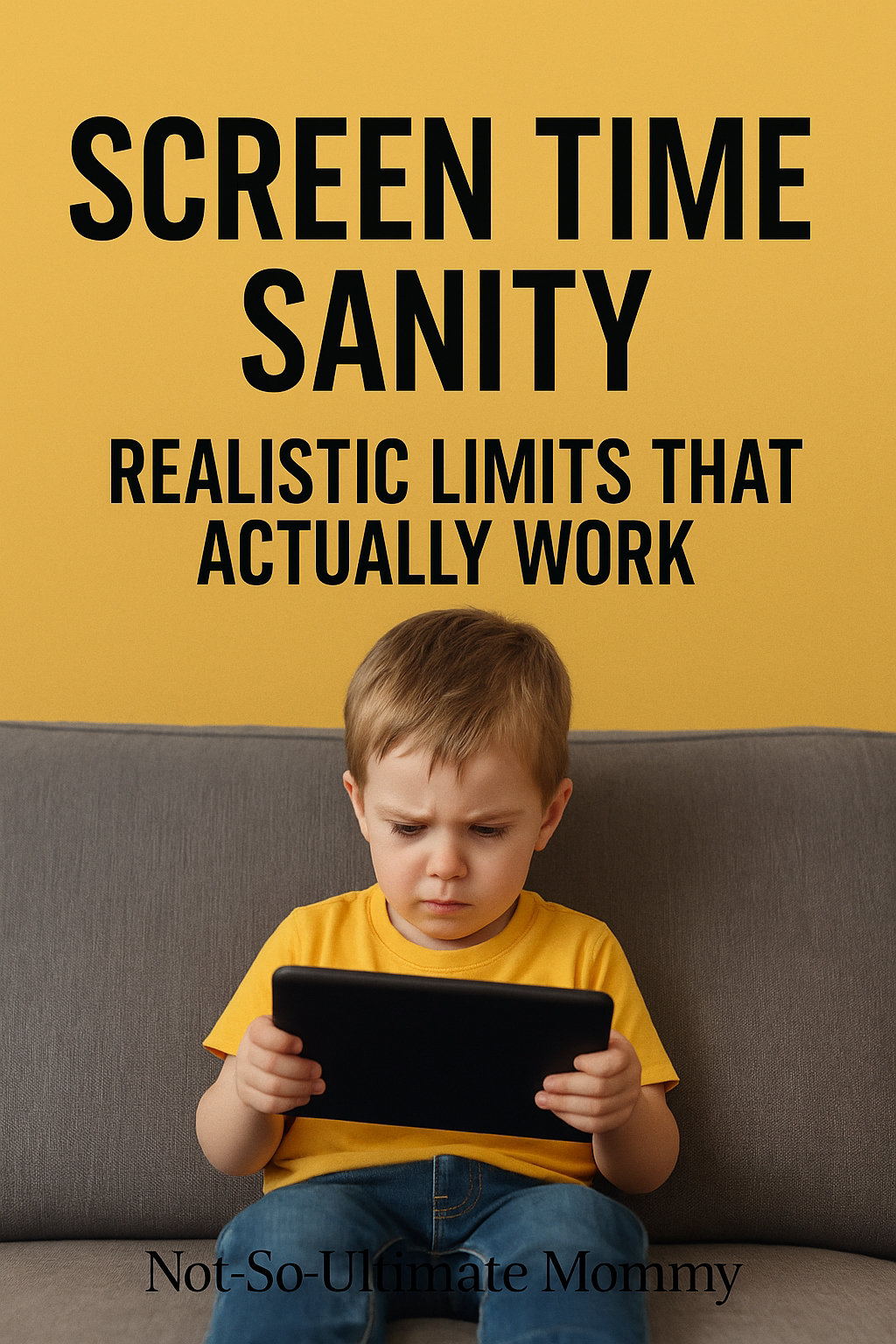Let’s be honest: screen time gets a really bad rap in the parenting world. Spend five minutes in a mom group and you’ll find someone declaring that kids shouldn’t have any screen time, ever. That the TV is rotting their brains. That iPads are turning toddlers into zombies. That “back in my day” we played with sticks and imagination and liked it.
You know what else we didn’t have back then? A global pandemic, remote schooling, constant work-from-home demands, or the intense pressure of 24/7 parenting with limited support. So let’s start by throwing a little compassion into the screen time conversation—because this isn’t about guilt. It’s about balance.
The Truth About Screen Time
We don’t live in a screen-free world. Technology is part of our kids’ reality—and it’s not all bad. Educational shows teach letters and numbers. Interactive games build problem-solving and motor skills. And yes, sometimes a quiet cartoon is the only thing standing between you and a full-blown parental meltdown.
But just because screens aren’t inherently evil doesn’t mean they should be unlimited.
The key is intentional use—setting boundaries, staying engaged, and understanding the why behind your screen time decisions.
What Screen Time Looks Like in a Real-Life Household
In our house, screen time isn’t a taboo topic. We don’t act like it’s a forbidden treat or an inevitable sin. It’s a tool—one we use with intention, and one we monitor closely. Here’s what that actually looks like:
- Set time limits that vary by age, activity, and behavior. Sometimes it’s 30 minutes after school. Sometimes it’s a movie night with popcorn and blankets. Other times it’s a hard “no,” especially if screen time has been turning our kids into tiny rage monsters.
- Pick quality content. Not all screen time is equal. We steer away from mindless toy unboxing videos or content with endless ads and no educational value. Instead, we look for shows and games that teach something—social skills, letters, science, empathy. And we watch together, at least some of the time.
- Use screen time as a bridge, not a babysitter. Do we sometimes hand over the tablet so we can make dinner or pee in peace? Absolutely. But we try not to use it as a constant placeholder for parenting. Screens are a break—not a substitute.
- Talk about what they see. If our kids watch a show, we ask questions. “Why do you think that character felt sad?” “What would you do if that happened to you?” It turns passive screen time into a shared experience.
How to Set Limits Without Losing Your Mind
Setting screen time rules doesn’t have to be a constant battle. Here are a few tricks that actually work (most of the time):
1. Use timers.
Let the timer be the bad guy. Set a kitchen timer or use the one built into the tablet. When it goes off, screen time is done—no negotiation. The timer said so.
2. Create a screen schedule.
Have “screen days” and “no-screen days” or certain hours where screens are allowed. The structure helps kids know what to expect and removes a lot of the whining.
3. Earned screen time.
Incentivize screen time with other activities. “When your homework is done, you can have 30 minutes of TV.” Or, “Let’s clean up the toys and then pick a show.”
4. Model good habits.
This one’s hard, but important. If we’re constantly glued to our phones, it sends a mixed message. Kids notice more than we think.
5. Replace, don’t just remove.
If you’re cutting back on screen time, replace it with something. Coloring, crafts, outside play, audiobooks, puzzles, fort-building, baking—anything that captures attention and doesn’t require charging.
When Screen Time Becomes a Problem
Sometimes, even monitored screen time causes issues. Maybe your child becomes super cranky after watching certain shows. Maybe they start refusing to do anything else. Maybe screen time battles turn into full-scale wars.
If that’s happening, it’s time to reassess. Not all kids react the same way. Some are more sensitive to overstimulation. Some shows are more dysregulating than others. It’s okay to say, “This isn’t working right now,” and take a break.
And don’t be afraid to bring in professional help if needed. There’s no shame in getting support from a pediatrician, occupational therapist, or counselor—especially if screen struggles are affecting your child’s mood or behavior long-term.
Let’s Talk About the Guilt
We need to stop pretending that a little screen time makes you a bad parent.
You’re not ruining your kid because you turned on Bluey so you could drink coffee before it got cold. You’re not failing because your child plays a math game on the iPad while you clean the kitchen. You’re not doing it wrong because your house doesn’t look like a Waldorf Pinterest board.
Parenting is hard. Screens are part of the modern toolbox. What matters is how you use them—not that you use them.
Final Thoughts
Realistic screen time limits aren’t about banning screens or feeling guilty every time your child touches a tablet. They’re about making thoughtful choices, staying involved, and finding what works for your family—not someone else’s.
You know your kids better than anyone else. You get to decide what’s healthy, what’s manageable, and what makes your life just a little bit easier.
And if that means an episode of Paw Patrol while you shower in peace? That’s not failure. That’s smart parenting.
